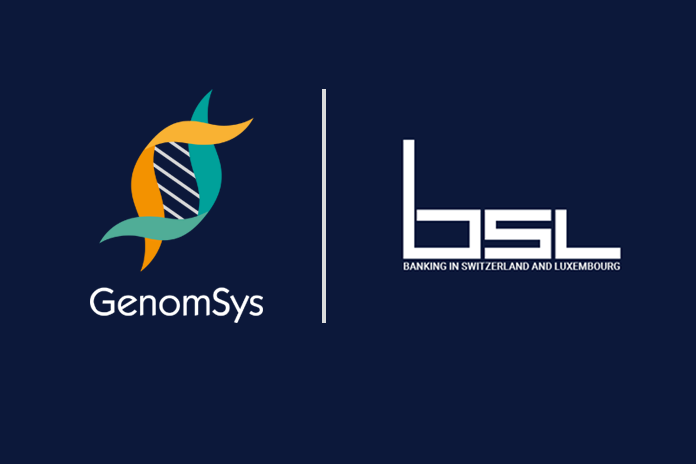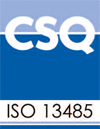Human genomics is a becoming centerpiece in various areas of medicine. Since the human genetic code was decoded almost twenty years ago, a growing range of diagnostic, preventive, and treatment strategies have been developed based on the sequence of life – our DNA.
What is genomics?
Genomics is the study of the structure, function, and evolution of genomes that has seen a dramatic acceleration following the completion of the Human Genome Project in 2003 (the project that aimed to decode the complete sequence of the human genome) and the continuous progress of DNA sequencing technologies.
How does genomics affect healthcare today?
Genomics is already an essential element in people’s diagnosis and prevention and the basis for new and targeted therapies, personalized medicine (e.g., breast cancer, where well-researched genes and their variants have provided valuable clues to more appropriate treatments).
How Genomics can be helpful in everyday life?
On top of diagnostics and clinical applications, the expanding genomic knowledge provides clues also to improve our nutrition and fitness routine based on the unique genetic makeup.
How genomic analyses are made?
The analysis of DNA or genomic testing includes the following:
Collecting a DNA sample and turning it into its digital representation
-
- Drawing of a DNA sample, typically from blood, skin cells or saliva
- Isolation of DNA from the sample
- Sequencing of the DNA (i.e., its “reading” into digital format, a long sequence of the four bases)
Analyzing the sequenced DNA
-
- Identification of variants vs. a reference genome
- Annotation of the found variants, to provide a biological context and indicate which ones have implications on health based on published research
- Interpretation of the found variants for diagnosis or for further decisions on treatment
For a better understanding watch our short video on Genomic Testing here.
The need for genomic data standard and robust analytical tools
In the past few years, technology breakthroughs resulted in a drastic increase of DNA sequencing speed and automation level while significantly reducing the cost, e.g., sequencing a whole genome that cost over $3 billion in 2003 is now less than a thousand dollars. This enables continuous additions to our genomic knowledge (e.g., over 80 new variants of significance are added each month to one scientific database alone), making genomics more relevant each day. The vast amount of data generated in this process, at an ever-increasing pace, and the growing genomic applications emphasize a need for efficient data formats and specialized robust analytical tools.
While previously limited sequencing capacity pushed for small gene panels (i.e., sequencing and analysis of small portions of our DNA), there is a growing trend towards sequencing Whole Exomes (the protein-coding part of our genome) or even Whole Genomes, the whole code. Small gene panels did not require much storage space while Whole-Exome or Whole-Genome datasets space and required processing power to grow exponentially.
The international standardization body, ISO, stepped in and recently published a genomic data standard (ISO/IEC-23092 MPEG-G), enabling significant data compression, selective data access and guaranteed interoperability. Hence, the standard enables more efficient and selective data processing without requiring accessing and possibly decompressing the entire DNA when not necessary, accelerating analyses and lowering their costs. Interoperability and clear standardization also facilitate data exchanges between research institutions and data reuse for individuals.
At the same time, the increasing use of genomics in everyday diagnosis and treatment optimization needs robust and user-friendly analytical tools to enable geneticists to focus on analyses and not on doing the software work. In Europe, the upcoming implementation of the new in-vitro diagnostic regulation goes exactly in this direction, requiring any analyses for diagnostic or clinical use (i.e., not pure research) to be run on robust certified (CE-marked) analytical tools, providing the necessary quality assurance to such important tasks for our lives.
Genomics beyond the clinical setting
The increasing knowledge has moved genomic analyses from pure diagnostic applications in the clinical lab to citizens’ homes for lifestyle and wellbeing. For a few years, multiple companies have offered consumers information about their genomic fitness traits and difference in how nutrients are metabolized, or on the presence of intolerances.
To respond to increasing consumer demand, specialized companies are also enlarging the spectrum of analyses offered to information on specific health risks (typically increased or decreased risk of a certain event or disease happening, ceteris paribus) or the possibility of transmitting recessive mutations to newborns. All of this “for information only”, i.e., as useful information for the individual, but without the claim to provide a full diagnosis or inputs for physicians to optimize treatment.
In regions where these developments have been longer in place, there is, however, a mounting concern for the privacy of DNA data provided and for potential misuse.
To answer these growing concerns, we foresee for such consumer-driven applications a model increasingly centered on the individual’s smartphone as the secure private storage medium and as the gateway for consumer’s initiated genomic analyses and genetic consultations (as appropriate and scientifically and legally possible). The convergence of genomic technology with mobile as the ubiquitous personal medium is paving the way for true personal genomics in the hands of millions of people. This evolution proves once again the demand for even complex clinical services to be driven not only by healthcare professionals but also by the ultimate beneficiaries, the individuals, or patients, with the smartphone as a primary digital health tool. The same developments that we have witnessed with the growth of telemedicine services or the increasing number of chronic disease management applications.
Privacy and Research
Our DNA is truly unique and irreplaceable. As we mentioned, there is a growing concern for DNA data privacy, yet there are situations in which data sharing is essential for research progress. To develop genomic insights and ultimately new treatments and therapies, we have to share our DNA with research institutions. This exchange of genomic data is crucial as there is much more to discover in this yet infant branch of medicine.
Data transfer challenges arise from legal privacy protection issues, between the European Union and other countries’ or even between countries in the EU due to specific constraints on genomic data sharing, but also from the difficulty of reaching large numbers of participants with the current siloed approaches. This leads to a slowdown in medical progress and constrains the full potential of research. Technology can be the answer to build a convenient bridge between protecting genomic data privacy and offering a secure way to share information for research purposes.
We already carry the potential technological tool in our pocket – the smartphone. An application as a platform to securely store genomic information could put the citizen in the driver seat, choosing if and when to contribute to a specific research project.
In the end, convenience and its personal nature could allow individuals to leverage their own genomic data as they wish, from running analyses for their own insight or as part of a physician diagnostic effort, to participating in research studies for the evolution of healthcare.
This article appeared in the annual BSL Banking Switzerland and Luxembourg guide “In Tech we trust” 2021-2022.
Please find the article as well here.





